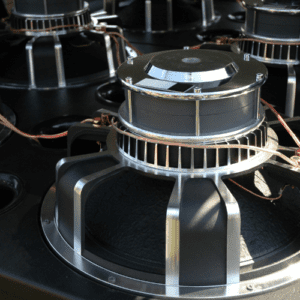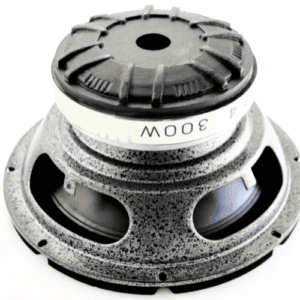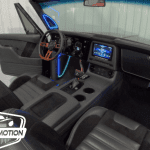The Product Specialist and Installer you’re working with has two alternatives for mounting subwoofers in your enclosure when constructing a car audio subwoofer system. Of course, there is also the standard approach, which places the motor unit and basket inside the enclosure. Having said that, many setups put the subwoofers inverted, or as many people refer to it, upside down. Let’s discuss the advantages and disadvantages of this installation technique.

Cooling is the main advantage of installing your subwoofers such that the motor unit and basket are visible. The voice coil and magnet generate heat, which is easily released into the car’s interior air. Thermal power handling can be significantly improved by having access to all of the relatively cool air inside the vehicle, especially when contrasted to an enclosure with an acoustic suspension.
The mounting depth is the second advantage of an inverted subwoofer installation. Deep subwoofers can be mounted in areas with shallow mounting depth if only the cone is inside the enclosure. Yes, the front of the enclosure will feature a sizable woofer that may reduce your vehicle’s ability to haul baggage.
Increased enclosure volume is a minor advantage of inverted subwoofer installations, continuing the same theory regarding depth. Large motor assemblies and baskets on subwoofers allow them to easily move 1/10 of a cubic foot. As a result, your installer has the option of reducing the enclosure’s size or enhancing the subwoofer system’s low-frequency output with additional airspace. Although there won’t likely be a noticeable difference, having extra deep bass is always a plus!

Installations of inverted subwoofers have various disadvantages. First of all, it can be difficult to prevent baggage from damaging the wiring and the back of the subwoofer. This is hardly the kind of installation you would pick for a daily driver that is also used for grocery shopping or traveling. On the other hand, if there is a deliberate and persistent attempt to keep things safe, it might be perfect for a company demo vehicle or a show car.
Finding a method to keep the wiring to the voice coils of the subwoofer appearing neat might be challenging. Few people give a damn about the wiring within an enclosure as long as the electrical connections are reliable. Terminations and wire routing become a real concern once the wiring is exposed. Another concern is shielding the connections from harm or items that might short the terminals.
The next issue is a little drop in efficiency. No, the subwoofer’s operation is unaffected, but the effective cone area could be smaller. The full cone surface is available to pressurize and rarefy the air in the vehicle when the woofer is placed normally. The section of the cone inside the voice coil may not help move air when installed upside down. The woofer’s design has some bearing on this impact. The difference will be negligible if the pole component is ventilated.

Finally, the possibility of unwelcome noise is likely the biggest disadvantage of having a subwoofer installed inverted. At high excursion levels, not all voice coil cooling systems are silent. At high output levels, airflow over the coil, top plate, and into and out of vents may generate undesired puffing and chuffing. Tinsel leads may also generate noises if they make touch the cone during loud performances.
There is usually no simple solution for a subwoofer that creates these kinds of noises, which is unfortunate. It’s best to install the subs using a traditional cone-out setup. Without an enclosure, your installer can test the subwoofers by sending a signal to them and listening for sounds. But take caution not to bottom out the woofer.
Have more questions about inverting subwoofers? If so, contact us, we love helping customers.
 High-End Car Audio InstallationPrevious Post
High-End Car Audio InstallationPrevious Post The Definitive Guide to Remote Starters for AutomobilesNext Post
The Definitive Guide to Remote Starters for AutomobilesNext Post